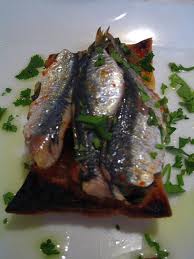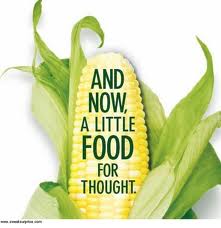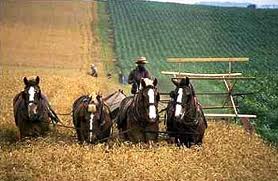This blog all started with hot dog relish.
I happen to like sardines on whole wheat toast with onions and mustard. (Regardless of what you think of that, go with me here for a while.) Excepting the sardines, that’s close to the classic condiments one finds on ballpark hot dogs. So I wondered what that would all that taste like with some sweet hot dog relish tossed in. That sets the stage.
I am also some one who avoids high fructose corn syrup. It’s part of my first personal food rule, avoid refined carbohydrates. I think they are behind some disease trends. Let me show you some statistics from one study, Trends in Stomach and Pancreatic Cancer and Mortality in England and Wales, 1951-2000, published in 2007.
The relative risk of dying from pancreatic cancer from 1951 to 1955 was 0.91. From 1976 to 1980 it was 1.11. The risk now is 12.0. High fructose corn syrup was invented in 1957, was introduced into prepared foods and was widely used by 1977. Is it a coincidence that the pancreatic cancer rate rose with the use of high fructose corn syrup? And in the 30 years since the risk has risen from essentially 1 to 12. Coincidence? Consider diabetes.
The proliferation of diabetes, of which we have an epidemic, is in lock step with the invasion of that syrup into our foods and the wide-spread use of refined carbs. We are now seeing in children a form of diabetes that was usually confined to overweight older adults, in fact it was called Adult Onset Diabetes. Now it is type two diabetes. Ponder that. We are seeing a disease in children that was virtually nonexistent a few years ago. When you have an endemic change in a chronic disease it suggests something has changed to which we have not physically adapted. To me that says wide-spread changes in the food supply. Bottom line: I want sweet relish without high fructose corn syrup, HFCS.
I must have looked kind of silly reading all of the relish jars in the supermarket. They all had HFCS, as I suspected they would. It’s easier to use — if you’re a commercial food manufacturer — and sweeter, less goes a long ways. And it is in everything. Try finding some ketchup/catsup without it, or canned beets, or creamed corn. The list goes on. Like the fall from grace of transfats, which were once the darlings of kitchen chemists, I suspect some day HFCS (and refined carbs) will also fall after being linked to health pandemics. I, however, avoid HFCS today. Thus I now make my own relish and ketchup.
I have two other personal food rules I try to follow. One is no more than five ingredients in a boughten food. When the food comes in a package, I count the number of ingredients. If it is more than five I usually pass unless most of them are named spices. Five ingredients gives you a medium such as water, vinegar or syrup, a few spices and minimally processed real food. Less is more. I like to read things like: Cabbage, water, salt. Better: Beets, water. Best: Dried apricots. If the label reads like the stuff in the chemistry set I got for Christmas once, I skip it. You know what I mean; ingredient lists with a lot of words that start with: Mono-, tri-, methyl-, di-… et cetera… if I can’t pronounce it I don’t eat it. Avocado is about the longest word I consume.’
Of course real food is always better than something packaged. Where is the real food, besides out in the fields and woods? It’s usually around the edges of the grocery store. Produce, meats, and dairy are usually around three of the store’s four walls, the front being the fourth. Shop around the edges and you’ll do well. Be on the fringe and be healthy. Non-food is in the middle.
To be frank, a similar chemical problem exists in the field with wild edibles. Amaranth and PBC’s come to mind, pigweed and motor oil, persimmons and tire dust. In the supermarket I try to avoid food contaminated by “kitchen” chemicals, such as additives, dyes, and preservatives, in the wild I try to avoid edibles contaminated by commercial chemicals, such as pesticides, petroleum products, and compounds that will make you glow in the dark or have kids with five arms. The irony is wild food tends to be more nutritious than cultivated food but it is exposed to even worse chemicals. It is a statement about our times that we have to be careful about chemical contamination in and out of the grocery store.
I have a friend who is a chemist, and he’s fond of saying everything is chemistry, and he may be right. But the chemist in the kitchen does not have a good track record health wise, nor in the field starting with DDT (which is still out there in many long-lived plants such as lichen.) I don’t want to sound like a Luddite, or a poster child for the Amish way of life, but I think many things of the past were better, particularly the food our ancestors ate. That brings me to my third personal rule, and I’ve mentioned it before, … if your great grandmother would not recognize it as food, don’t eat it.
Now, by avoiding high fructose corn syrup, chemicalized food and eating like my great grandmother, do I expect to escape the grim reaper? No, not at all. When ever you read a study that says such-and-such reduced cancer or heart attacks what that really means is the people didn’t get cancer or had a heart attack at the expected age. They still die of cancer and of heart attacks et cetera, just a few years later than usual. And that’s the goal. I’m here only once that I know of and I want to hang around as long as possible.
I think the more real food you eat and the less chemicals — where ever they are — the better off you are. So I avoid the the non-food of the grocery store and adulterated wild foods. Hopefully I can wander in the woods a little longer than usual, and be healthy while wandering.








I agree w/ you whole heartedly. Something appears to be wrong w/ the way we’re eating. I’ve personally stopped buying sodas and rely primarily on tea and cane sugar, grow my own vegetables and small livestock. I also utilize “weeds” as animal fodder, and encourage others to do the same. I’ve gotten to the point where I don’t need to buy food other than animal feed. It’s amazing how much you can grow on a quarter acre.
And you can save even more when you grow your own sprouts. My favorite is Daikon Radish. I live north so during the winter when
there’s not much growing on my plot, I sprout.
Actually several plants grow under the snow, or on sunny hills in the winter, and persistent fruits and nuts can be collected in winter. If I remember correctly chickweed germinates under the snow and checke berries hold their fruit.
Your article was very informative and quite frankly , OUTSTANDING ! Thank you for sharing and I hope you feel compelled to continue doing so ; because now I’m hooked and need more. Your articles give life ! May your life be blessed abundantly.